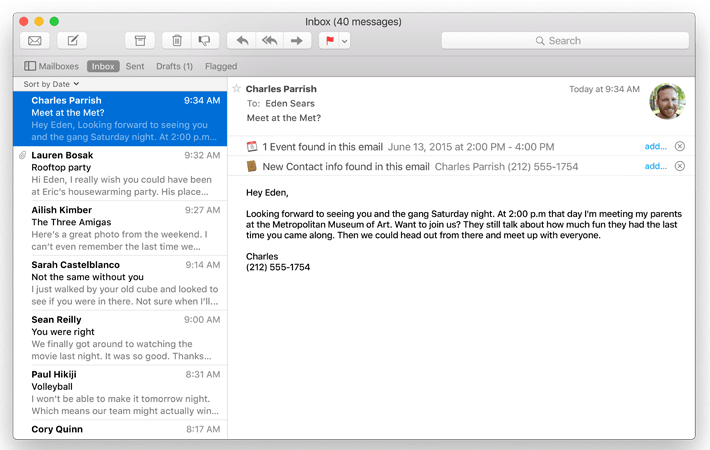- Change Date Terminal Mac El Capitan Mac
- Change Date Terminal Mac El Capitan Free
- Change Date Terminal Mac El Capitan Update
- Change Date Terminal Mac El Capitan
- Mac El Capitan Download
The other day a co-worker needed to borrow a Mac, so I grabbed an older MacBook Air from storage. I decided to wipe out the laptop’s flash storage and install a fresh version of OS X. I created a bootable USB flash drive installer, plugged it into the laptop, pressed the Option key as the machine booted, and then selected the USB drive as the boot disk.
I then ran Disk Utility to reformat the drive and then ran the installer to install OS X. It looked like things were moving along, until this appeared on the screen.
I created another boot disk using a different storage drive, in case it was a hardware problem, but I got the same error. I figured that the fact that the laptop had been in storage for a while had something to do with it, and it did.

Boot into Recovery (start up holding down down Command-R until the Apple logo appears), and select 'Security Configuration' from 'Utilities' on the menu bar. Uncheck 'Enforce System Integrity Protection', click 'Apply Configuration', click 'Apply' on the resulting prompt, and restart. Rootless will now be disabled. Just change your system date, let's say to, install El Capitan, then change the date back to today. MacBook Pro 15' Unibody Mid 2009. MacOS Package (.pkg) Installer.
Note: This fix should work with OS X Mavericks and El Capitan. It also worked for me with macOS Sierra, which shows a different error message (“The installer payload failed signature check” pops up near the end of the installation) than the one that appears for El Capitan and Mavericks.
When it starts up in the El Capitan installer, can you not just quit the installer? The date to use an older copy is Oct 23 or earlier, but not sure how you will be able reset it. 1 Like moitori (Tori Hernandez) November 17, 2019, 6:15am #3. This tutorial can be used for OS X 10.11 El Capitan, OS X 10.10 Yosemite, OS X 10.9 Mavericks and OS X 10.8 Mountain Lion. Boot into Recovery Partition. When booting starts press command + R and hold until you see startup screen. Go to UtiliesTerminal.
How to fix the problem
The installer checks the date on the computer. If the date isn’t current, you get the error above. The fix involves correcting the date on your Mac.
If you have an older OS on the Mac
If you have a complete OS on the Mac already, boot into it. Fix the date in the Date & Time system preference (Apple menu > System Preferences). Reboot using the USB boot disk, and you should be able to proceed with the installation.
If you don’t have an OS on the Mac
If you are in a situation like I was, and you don’t have a complete OS on your disk (you reformatted it), you’ll find that there’s no way to access the Date & Time system preference when you use an external USB boot installer drive. The Apple menu doesn’t give you access to System Preferences. You have to use the Terminal to set the date and time.
If you use an external boot disk, you Mac starts up into OS X Disk Utilities. You can access the Terminal by clicking on the Utilities menu and selecting Terminal. Once the Terminal has launched, follow these steps.
- At the prompt, type
dateto see the date that’s on the Mac. For example, here’s the date of the MacBook Air I worked on.
- If your Mac is connected to the internet, you can tell your Mac to check online for the current date and time. You can do this by typing at the prompt
ntpdate -u time.apple.comand then pressing Return.
Your Mac should now have the current date and time. If you enter date again (as I did in the screenshot above) the information that appears will be current. You can now run the OS installer.

If you don’t have an internet connection
You can still use Terminal to set the date. Go into the Terminal as described above, then follow these steps.
- At the prompt, type
dateto see the date that’s on the Mac. - Figure out the numerical representation of the date and time. The pattern you need to follow:
- Month: in two-digit format. For example, July is 07.
- Day: in two-digit format. For example, the 19th is 19. Another example: the 7th is 07.
- Time: in military format of hours and minutes. For example, 2:00 p.m. is 1400.
- Year: Last two digits.
In my example, the numerical representation is 0719140016. This stands for July (07) 19, (19), 2 p.m. (1400), 2016 (16).
- At the prompt, type
date [numerical], with[numerical]being the representation you figured out. In my example, I typeddate 0719140016. Then press Return.
The date should be set. You can check the date again by typing date at the prompt. You can now run the installer.
Why do you need to download El Capitan through Terminal.
El Capitan is freely available from this link.
Here are the instructions.
Go to Section 4 and click on Download OS X El Capitan.
This downloads InstallMacOSX.dmg to your Downloads folder.
The next section can only be done on a mac that is capable of running El Capitan,
a mac that came preinstalled with an OS later than El Capitan will refuse to do the next bit.
When downloaded open to InstallMacOSX.pkg, double-click on
that and an installation window will open, this does not install El Capitan
but converts the InstallMacOSX.pkg to the Install OS X El Capitan.app which
Change Date Terminal Mac El Capitan Mac
you will find in your Applications folder, it should be 6.2GBs in size.
(If the installation window asks which disk you want to install to, you must pick
the disk that you are booted to at the time. Not any internal or external disk that
you want to eventually install El Capitan on, that is for later.)
To start the installation of El Capitan double click on the Install OS X El Capitan.app.
The copy of the install app self deletes after installing El Capitan, so make sure you keep a copy of the InstallMacOSX.dmg
Change Date Terminal Mac El Capitan Free
if you need it in future, or you could just make a copy of the Install OS X El Capitan.app prior to installing and moving it to
Change Date Terminal Mac El Capitan Update
an external drive for safe keeping. It is also possible to create a bootable USB installer disk using the Install OS X El Capitan.app
in the Applications folder and the createinstallmedia command in the Terminal app.
Change Date Terminal Mac El Capitan
Read the instructions here,
Mac El Capitan Download
Sep 2, 2020 12:18 AM